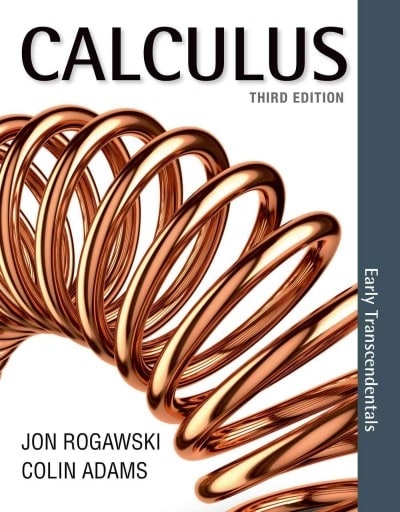Question
Construct a time-series graph of the sales data for MountainWear's line of ski apparel (see data in Week 4 Fall 2022 Case One Data.xls). Does
- Construct a time-series graph of the sales data for MountainWear's line of ski apparel (see data in Week 4 Fall 2022 Case One Data.xls). Does there appear to be a seasonal pattern and/or trend in the sales data? Explain why you think there is or is not seasonality and/or trend in the data.
| Period | Sales $ | Inc | NRUR |
| Mar-09 | 153907 | 475 | 6.9 |
| Jun-09 | 127732 | 534 | 6.5 |
| Sep-09 | 93209 | 574 | 6.5 |
| Dec-09 | 118203 | 622 | 6.4 |
| Mar-10 | 145611 | 667 | 6.3 |
| Jun-10 | 129976 | 702 | 6.2 |
| Sep-10 | 95219 | 753 | 6.3 |
| Dec-10 | 105210 | 796 | 6.5 |
| Mar-11 | 164592 | 858 | 6.8 |
| Jun-11 | 113201 | 870 | 7.9 |
| Sep-11 | 105932 | 934 | 8.3 |
| Dec-11 | 132182 | 1010 | 8 |
| Mar-12 | 174200 | 1066 | 8 |
| Jun-12 | 152918 | 1096 | 8 |
| Sep-12 | 132290 | 1162 | 8 |
| Dec-12 | 152419 | 1187 | 7.8 |
| Mar-13 | 182764 | 1207 | 7.5 |
| Jun-13 | 162921 | 1242 | 7.1 |
| Sep-13 | 132961 | 1279 | 6.9 |
| Dec-13 | 152971 | 1318 | 6.5 |
| Mar-14 | 193271 | 1346 | 6.2 |
| Jun-14 | 172312 | 1395 | 5.5 |
| Sep-14 | 152281 | 1443 | 5.3 |
| Dec-14 | 192314 | 1528 | 5 |
| Mar-15 | 221938 | 1613 | 4.8 |
| Jun-15 | 219223 | 1646 | 4.7 |
| Sep-15 | 182342 | 1694 | 4.5 |
| Dec-15 | 201921 | 1730 | 4.4 |
| Mar-16 | 253901 | 1755 | 4.2 |
| Jun-16 | 243976 | 1842 | 4 |
| Sep-16 | 203338 | 1832 | 3.9 |
| Dec-16 | 246723 | 1882 | 3.8 |
| Mar-17 | 265532 | 1914 | 3.5 |
| Jun-17 | 223008 | 2027 | 3.5 |
| Sep-17 | 219976 | 1989 | 3.4 |
| Dec-17 | 243338 | 2056 | 3.4 |
| Mar-18 | 274456 | 2032 | 3.3 |
| Jun-18 | 253382 | 2204 | 3.2 |
| Sep-18 | 227764 | 2190 | 3.1 |
| Dec-18 | 241138 | 2342 | 3.1 |
- Develop a multiple regression model for sales as a function of different quarters, income (INC) and unemployment (NRUR).You can define as following: a dummy variable Q1 = 1 for each first quarter and Q1 = 0 otherwise; a dummy variable Q2 = 1 for each second quarter and Q2 = 0 otherwise; and a dummy variable Q3 = 1 for each third quarter and Q3 = 0 otherwise. Identify the regression equation for your model:
SALES = b0 + b1(Q1) + b2(Q2) + b3(Q3) + b4(INC) + b5(NRUR)
3. Do the signs on the coefficients make sense? Explain why.
4. Identify whether the five variable coefficients in your model are statistically different from zero, using a 95 percent confidence level and a one-tailed test.
5. What percentage of the variation in sales is explained by this model?
6. Use your model's forecast of SALES (SF2) for the four quarters of 2019 to calculate the MAPE for the forecast period.
PERIOD | SALES ($) | SF2 |
2019Q1 | 322988 | |
2019Q2 | 290875 | |
2019Q3 | 256882 | |
2019Q4 | 275400 |
7. Include a time-series plot of SALES (for 2009Q1 through 2018Q4) and SF2 (for 2019Q1 through 2019Q4) from your model created in part b to illustrate how SALES and SF2 compare. Compare your model's historical MAPE to the forecast MAPE you calculated in part f. Identify any differences.
Step by Step Solution
There are 3 Steps involved in it
Step: 1

Get Instant Access to Expert-Tailored Solutions
See step-by-step solutions with expert insights and AI powered tools for academic success
Step: 2

Step: 3

Ace Your Homework with AI
Get the answers you need in no time with our AI-driven, step-by-step assistance
Get Started


